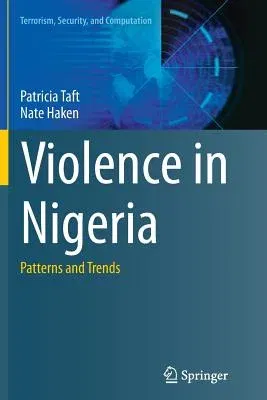This book takes a quantitative look at ICT-generated event data to
highlight current trends and issues in Nigeria at the local, state and
national levels. Without emphasizing a specific policy or agenda, it
provides context and perspective on the relative spatial-temporal
distribution of conflict factors in Nigeria. The analysis of violence at
state and local levels reveals a fractal pattern of overlapping
ecosystems of conflict risk that must be understood for effective,
conflict-sensitive approaches to development and direct conflict
mitigation efforts. Moving beyond analyses that use a broad religious,
ethnic or historical lens, this book focuses on the country's 774 local
government areas and incorporates over 10,000 incidents coded by
location, date and indicator to identify patterns in conflict risk
between 2009 and 2013. It is the first book to track conflict in Nigeria
during this period, which covers the Amnesty Agreement in the Niger
Delta and the birth of Boko Haram in the North. It also includes
conflict risk heat maps of each state and trend-lines of violence. The
authors conclude with a discussion of the nuanced factors that lead to
escalating violence, such as resource competition and trends in
terrorism during this critical point in Nigeria's history. Violence in
Nigeria is designed as a reference for researchers and practitioners
working in security, peacebuilding and development, including policy
makers, intelligence experts, diplomats, national defense and homeland
security experts. Advanced-level students studying public policy,
international relations or computer science will also find this book
useful as a secondary textbook or reference.


